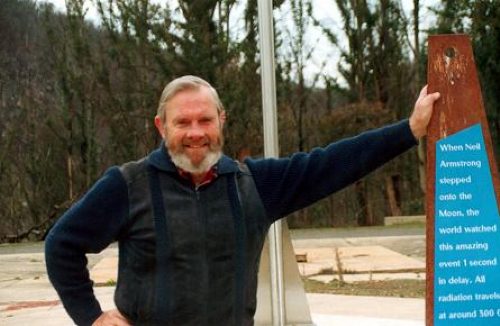
“Tracking
Apollo to the Moon”
 |
The “Unsolicited Plug” Department
|
In readable, fascinating detail, Hamish Lindsay – who was directly involved in all three programs – chronicles mankind’s greatest adventure with a great narrative, interviews, quotes and masses of photographs, including some previously unpublished. As well as bringing the history of these missions to life Tracking Apollo to the Moon serves as a detailed reference for space enthusiasts and students. Having seen the manuscript, the Smithsonian requested two copies of the finished book, and Buzz Aldrin asked for five!” |
“I am very pleased that one of the people from Australia who lived in the times has chosen to write about the space odyssey of the 20th century.
Hamish Lindsay has done a marvellous job of telling the story of manned spaced flight.
He has given his readers a sort of encyclopedia of the beginning of man’s quest for flight into space. This is followed with a splendid description of the real time operations of all of the major missions. As one who lived through the Camelot period of space in the 60s and knows the trauma we all endured, I am greatly impressed with the detail and authenticity of the stories that Hamish so vividly tells. For example, as I read Harnish’s account of the Apollo 11 and 13 missions, I could again imagine myself back in mission control reliving some of the finest moments of my life.
Those of you who are fortunate to read Hamish Lindsay’s account will be much richer for it.”
Jerry Bostick (Flight Dynamics Officer during Apollo 13) writes,
“Hamish Lindsay has accomplished what few other manned space program writers have; he has captured the excitement of the Apollo Program from the viewpoint of a participant, has led into it with an historical perspective of man's quest for the stars, and has sprinkled it with historical data, photographs and cartoons which results in an outstanding record of not only what happened during Apollo, but why.
I believe this book will be for future generations THE authorative record of one of mankind's greatest achievements.”
Publishing Info –
Published by Springer-Verlag in London in 2001
426 pages, 250 illustrations, hardcover
ISBN: 1-85233-212-3